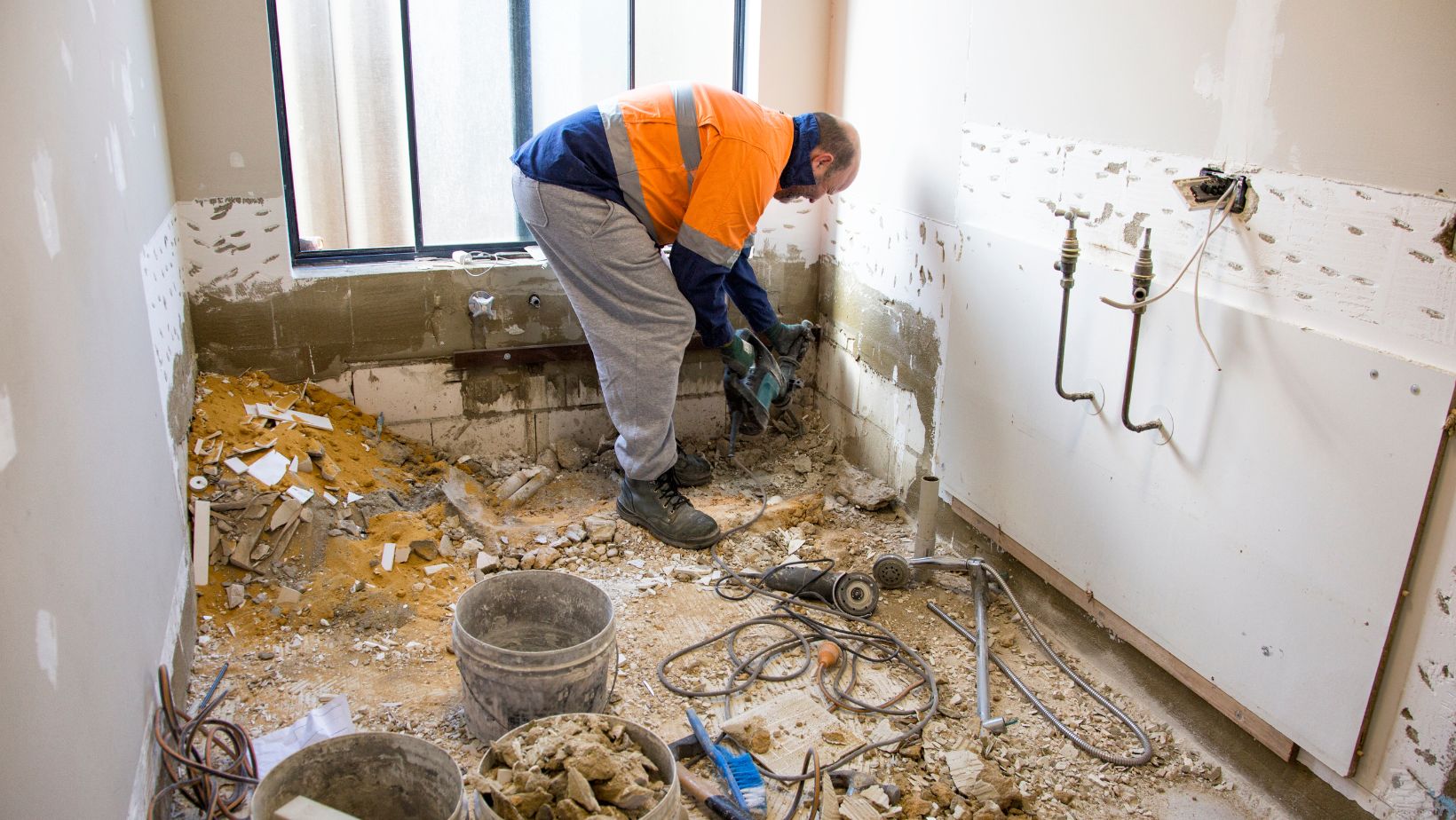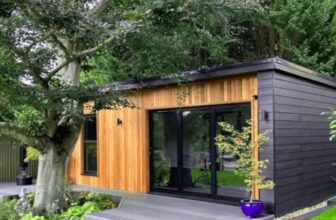
The Zen of Zero: Creating Net-Zero Bathroom Renovation Sanctuaries
Picture walking into a bathroom that feels like a spa retreat while secretly saving the planet one shower at a time. This isn’t some far-fetched eco-warrior fantasy; it’s the reality of comprehensive bathroom renovation projects and sustainable bathroom remodeling that prioritize net-zero energy consumption without sacrificing an ounce of luxury. Smart homeowners are discovering that energy-efficient bathroom upgrades can transform their most private spaces into environmental havens that pamper both body and conscience, proving that going green doesn’t mean going without style.
The marriage of sustainability and sophistication in bathroom design represents more than just a trend. When you explore culinary transformation principles applied to bathroom spaces, you discover that the same attention to detail that creates extraordinary kitchens can revolutionize how we approach sustainable home design in our most intimate spaces.
The Foundation Philosophy: Thinking Beyond Traditional Renovation
Net-zero bathroom renovation begins with a fundamental shift in thinking. Instead of simply updating fixtures and finishes, consider your bathroom as an integrated ecosystem where every element works in harmony to minimize environmental impact while maximizing comfort and functionality. This holistic approach treats water, energy, and materials as precious resources that should be celebrated rather than wasted.
The concept extends beyond energy efficiency into true regenerative design. Think of your bathroom renovation as an investment in both your daily wellbeing and the planet’s future. When done thoughtfully, these spaces become demonstrations of how luxury and sustainability can coexist beautifully, inspiring everyone who experiences them to reconsider their own relationship with resource consumption.
Modern bathroom renovation projects that achieve net-zero status typically combine cutting-edge technology with timeless design principles. The result feels both futuristic and grounded, sophisticated yet approachable. This balance becomes the hallmark of successful sustainable bathroom design.
Water Wisdom: The Liquid Gold Strategy
Water management forms the cornerstone of any net-zero bathroom renovation. However, this doesn’t mean accepting weak water pressure or compromising on the luxurious shower experience you crave. Instead, it involves selecting fixtures that deliver superior performance while dramatically reducing consumption.
Smart shower systems now offer precise temperature control and flow management that can reduce water usage by up to 50% while actually improving your shower experience. These systems learn your preferences and deliver the perfect temperature instantly, eliminating the wasteful warm-up period that traditional systems require. Some advanced models even capture and recycle the water used during temperature adjustment.
Greywater recycling systems represent the cutting edge of bathroom water management. These sophisticated systems capture water from sinks and showers, treat it naturally through living systems or advanced filtration, and redirect it for toilet flushing or irrigation. The technology has evolved to the point where these systems can be elegantly integrated into bathroom design without compromising aesthetics.
Consider implementing rainwater harvesting specifically for bathroom use. When combined with proper treatment systems, collected rainwater can supply all non-potable bathroom needs while reducing demand on municipal water systems. The psychological satisfaction of showering with water that fell from the sky adds an unexpected element of connection to natural cycles.
Energy Alchemy: Transforming Consumption Into Conservation
Energy efficiency in bathroom renovation extends far beyond switching to LED lighting, though that remains an important foundation. The most successful net-zero bathrooms employ layered strategies that address heating, lighting, ventilation, and water heating as interconnected systems rather than separate considerations.
Radiant floor heating powered by renewable energy sources provides luxurious warmth while consuming less energy than traditional forced-air systems. These systems maintain consistent temperatures with minimal energy input and can be powered entirely by solar energy during peak usage times. The gentle, even heat distribution creates a spa-like atmosphere that enhances the overall bathroom experience.
Heat recovery ventilation systems capture warmth from outgoing air and transfer it to incoming fresh air, maintaining air quality while preserving thermal energy. These systems prevent the energy waste typically associated with bathroom ventilation while ensuring proper moisture management that protects your renovation investment.
Smart lighting systems that respond to natural light levels and occupancy patterns optimize energy consumption without compromising functionality. Advanced systems can simulate natural daylight patterns, supporting circadian rhythms while minimizing electricity usage. Motion-activated accent lighting provides safety and convenience during nighttime visits without disrupting sleep patterns.
Material Mastery: Choosing Elements That Endure
Sustainable material selection for bathroom renovation involves considering the entire lifecycle of each element, from sourcing and manufacturing through daily use and eventual disposal or recycling. The most successful projects prioritize materials that improve with age rather than deteriorating, creating spaces that become more beautiful over time.
Reclaimed wood brings unique character and environmental benefits to bathroom design. Properly treated reclaimed materials offer superior durability compared to many new alternatives while providing visual warmth and texture that enhances the overall ambiance. Each piece tells a story while contributing to resource conservation.
Natural stone sourced from local quarries reduces transportation environmental impact while connecting your bathroom to regional geological heritage. These materials often perform better in humid environments than manufactured alternatives and develop attractive patinas that enhance their beauty over decades of use.
Recycled glass tiles and surfaces offer endless design possibilities while diverting waste from landfills. Modern manufacturing processes can create stunning visual effects using recycled materials, proving that environmental responsibility doesn’t require aesthetic compromise. These materials often exhibit superior durability and stain resistance compared to traditional alternatives.
Technology Integration: The Smart Sanctuary
Modern bathroom renovation projects benefit enormously from thoughtful technology integration that enhances both sustainability and user experience. However, the key involves selecting technologies that truly add value rather than complexity, focusing on systems that fade into the background while quietly optimizing resource consumption.
Smart water monitoring systems provide real-time feedback about consumption patterns, helping users understand and optimize their water usage without feeling restricted. These systems can detect leaks instantly, preventing water waste and potential damage while maintaining the seamless operation that luxury bathrooms require.
Programmable ventilation systems adjust operation based on humidity levels, occupancy, and outdoor conditions, maintaining optimal air quality while minimizing energy consumption. Advanced systems can coordinate with other home automation elements to optimize overall energy usage patterns.
Digital shower controls allow precise temperature and flow management while enabling multiple user profiles that remember individual preferences. These systems can coordinate with solar water heating systems to optimize energy usage and provide the most sustainable operation possible without compromising comfort.
Biophilic Design: Bringing Nature Inside
Incorporating living elements into bathroom renovation creates spaces that actively contribute to air purification while providing psychological benefits that enhance daily wellness routines. However, successful implementation requires careful consideration of humidity, lighting, and maintenance requirements.
Living walls featuring plants specifically selected for bathroom environments can dramatically improve air quality while creating stunning visual focal points. Modern hydroponic systems make maintenance manageable while ensuring optimal plant health. These installations can become conversation pieces that demonstrate environmental commitment in beautiful, tangible ways.
Natural lighting optimization through skylights, clerestory windows, or solar tubes reduces electricity consumption while supporting both human and plant health. Carefully positioned natural light sources can eliminate the need for artificial lighting during most daylight hours while creating dynamic lighting patterns that change throughout the day.
Water features incorporating natural filtration systems can create spa-like ambiance while demonstrating sustainable water management principles. Small-scale aquaponics systems can provide both visual interest and practical benefits, though they require commitment to proper maintenance and understanding of biological systems.
The Economics of Enlightened Renovation
Net-zero bathroom renovation represents a significant upfront investment that typically delivers strong returns through reduced utility costs, increased property values, and enhanced quality of life. However, successful project planning requires understanding both immediate costs and long-term benefits while identifying available incentives and financing options.
Many sustainable technologies qualify for federal, state, or local rebates and tax incentives that can offset initial costs significantly. Solar water heating systems, high-efficiency fixtures, and renewable energy integration often qualify for multiple incentive programs that improve project economics substantially.
The increased property value associated with sustainable bathroom renovation typically exceeds project costs, particularly in markets where environmental consciousness influences buyer decisions. Energy-efficient homes command premium prices and sell faster than conventional properties, making sustainable renovation a sound financial strategy beyond environmental benefits.
Reduced utility costs provide ongoing returns that compound over time. Households that implement comprehensive sustainable bathroom renovation often see 30-50% reductions in water and energy costs associated with bathroom usage, creating substantial savings that justify premium upfront investments.
Design Harmony: Aesthetics and Ethics United
The most successful net-zero bathroom renovations seamlessly integrate sustainable technologies and materials into cohesive design schemes that feel intentional rather than compromised. This requires careful attention to proportions, textures, colors, and lighting that work together to create spaces that happen to be sustainable rather than spaces that announce their environmental credentials.
Minimalist design principles often align naturally with sustainability goals, emphasizing quality over quantity and focusing attention on carefully selected elements rather than overwhelming variety. This approach typically results in more serene, spa-like environments that enhance daily wellness routines.
Timeless design elements ensure that sustainable investments remain relevant and beautiful for decades rather than requiring updates based on changing trends. Classic proportions, natural materials, and neutral color palettes create foundations that accommodate evolving personal preferences without requiring complete renovation.
The integration of sustainable elements should feel effortless and natural rather than forced or obvious. The most successful projects achieve sustainability goals while creating spaces that users love for their beauty, comfort, and functionality rather than their environmental performance.
Maintenance Philosophy: Sustaining the Sanctuary
Long-term success of net-zero bathroom renovation depends on maintenance approaches that preserve both aesthetic and environmental performance over time. This requires selecting systems and materials that age gracefully while implementing care routines that protect sustainable investments.
Natural cleaning products and methods protect both user health and the environmental systems integrated into sustainable bathrooms. Chemical-free cleaning approaches preserve the integrity of natural materials while supporting the biological systems that may be incorporated into advanced sustainable designs.

Preventive maintenance schedules ensure that high-efficiency systems continue operating at peak performance levels. Regular attention to seals, filters, and mechanical components prevents minor issues from becoming major problems while preserving the energy and water efficiency that justifies sustainable renovation investments.
Understanding seasonal maintenance requirements helps optimize system performance throughout the year. Some sustainable technologies require different care approaches during various seasons, and proper attention ensures consistent performance while maximizing lifespan.
The Ripple Effect: Inspiring Broader Change
Net-zero bathroom renovation often serves as a catalyst for broader sustainable living practices throughout the home and beyond. The daily experience of using a space that demonstrates environmental responsibility can inspire continued exploration of sustainable alternatives in other areas of life.
Sharing experiences and knowledge gained through sustainable bathroom renovation can influence friends, family, and community members to consider similar approaches in their own homes. These personal testimonials often carry more weight than abstract environmental arguments in motivating others to explore sustainable alternatives.
The skills and knowledge developed through sustainable bathroom renovation often transfer to other home improvement projects, creating opportunities for continued environmental impact improvements. Understanding sustainable design principles, material selection criteria, and system integration approaches provides foundations for broader home sustainability initiatives.
Conclusion: The Future of Intimate Spaces
Net-zero bathroom renovation represents more than just environmental responsibility; it demonstrates how thoughtful design can enhance daily life while protecting planetary resources for future generations. These projects prove that sustainability and luxury can coexist beautifully when approached with creativity, commitment, and careful attention to both immediate needs and long-term impacts.
The bathroom, as one of our most private and personal spaces, becomes a laboratory for exploring how we want to live in relationship with the natural world. When we create spaces that nourish both body and conscience, we establish new standards for what home renovation can accomplish.
As these approaches become more mainstream and accessible, net-zero bathroom renovation will likely become the expectation rather than the exception, driving continued innovation and making sustainable luxury available to broader audiences. The pioneers who embrace these approaches today are creating the templates that will guide residential design for decades to come.




